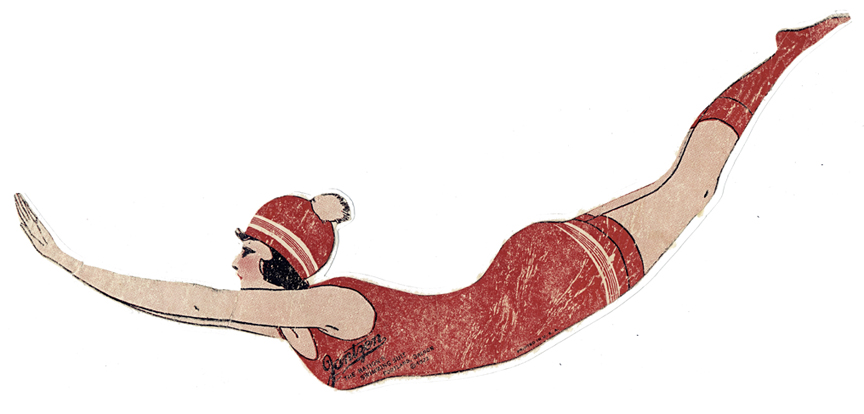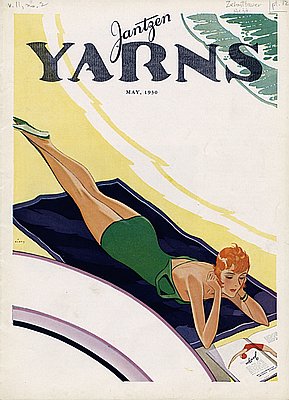The "Red Diving Girl," a corporate logo of the Jantzen Knitting Mills, was a highly effective marketing tool in the 1920s and helped the young Oregon-based company gain recognition across the United States as a leader in swimwear. John and Roy Zehntbauer and Carl C. Jantzen incorporated Jantzen Knitting Mills, first known as the Portland Knitting Company, in January 1910. During the company's earliest years, it struggled to survive, mainly manufacturing heavy sweaters and woolen hosiery.
The knitting company's first introduction to bathing suits occurred in 1913, when a member of the Portland Rowing Club placed a special order for a pair of rowing trunks. The athlete requested a garment made of the same kind of rib stitch as used on sweater cuffs, believing this would eliminate the need for an uncomfortable draw string. It worked so well that other club members placed similar orders. When an order came for a bathing suit of the same material, the Jantzen partners worked on creating one that was light enough for swimming--a challenge, as men's bathing suits at the time covered the chest and required more fabric than later suits.
After much tinkering, Jantzen added to their standard line the innovative "elastic stitch" bathing suit. With nearly twice the elasticity of standard jersey suits, the swimwear clung closer to the skin and was more functional for swimming. By the 1920s, the company had invested in custom-made machinery that enabled mass production of the suits, thereby reducing their cost and making them affordable to people of all income levels. This, together with the increasing popularity of swimming as a leisure sport and the company's exceptional advertising skills, launched Jantzen Knitting Mills into success.
The "Red Diving Girl" image first appeared in Jantzen's catalogs in 1920. The company first distributed "Red Diving Girl" cut outs, like the one featured here, after learning about a young man in rural Oregon who plastered his father's car with images cut from Jantzen's 1922 catalog. Soon, Jantzen windshield decals became extremely fashionable across the United States, to the point of causing near mob scenes when company officials passed out free decals on visits to major cities. The fad weakened later in the decade; nevertheless, the diving girl had become such an effective brand-recognition device that an independent trade market survey conducted in 1931 indicated that the icon was the seventh best known pictorial trade mark in the United States.
Further reading:
Vreeland, Carl. From Shearing Shed to Swimming Suit: The Story of an Oregon Enterprise. Portland: Jantzen Knitting Mills, 1936.
Lencek, Lena and Gideon Bosker. Making Waves: Swimsuits and the Undressing of America. San Francisco: Chronicle Books, 1989.
Written by Sara Paulson, © Oregon Historical Society, 2007.

